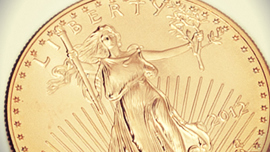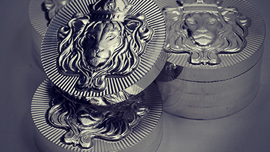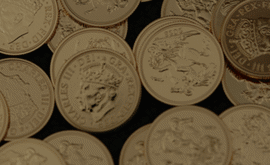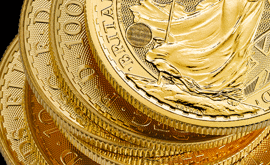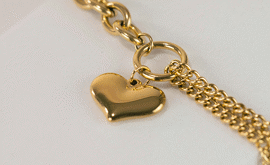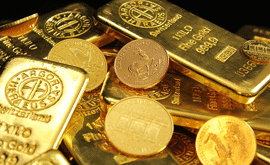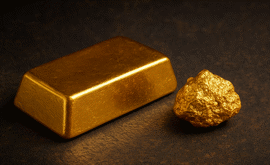An Introduction to Coin Clipping
Although illegal, this activity became a problem, as it reduced the weight and value of the affected coins, eventually leading to economic issues. Treated as a serious crime, those caught clipping coins would often face severe penalties, including imprisonment, torture, and even execution. This article will explore the details of coin clipping, how it was carried out, and the measures taken to combat it.
What is coin clipping?
Coin clipping is the removal of small pieces from the edges of coins made from gold or silver, usually using a knife or shears. Over time, these small pieces could be collected, melted down, and sold for profit. Of course, this practice reduced the weight and value of many of the coins in circulation at the time, which led to a loss of trust in the currency. Counterfeit currency was also a substantial problem, and it was common for counterfeit coins to be clipped by the forger in order to make them look genuine.
The practice of clipping coins became a common crime due to the value of the precious metals used in the circulating coinage of the time. Coins were struck to a standardised weight and purity, but it was relatively easy to clip or shave small amounts off a coin without raising suspicion. Common people were able to shave off a small amount from their silver pennies to sell and make some extra money. As a higher number of these clipped coins circulated, their reduced weight was eventually noticed, leading to a general devaluation of the currency. An English royal survey from the year 1247 estimated that most of the circulating coins of the time had been reduced by around a third of their weight.
The penalties for coin clipping were usually severe, varying over time and by region, but they often included large fines and imprisonment. In some cases, those convicted of coin clipping faced corporal punishment or execution. In Medieval Europe, clippers could be sentenced to lose an eye or a hand, or both, as well as banishment and a hefty fine. During the 17th and 18th centuries in Britain, clipping coins was deemed a capital offence, with those found guilty been sentenced to death. These harsh measures were put in place in an attempt to deter the practice of coin clipping in order to protect the integrity of the monetary system.
How does coin clipping occur?
Coin clipping was a straightforward process that required precision and a lot of discretion. Here is a step-by-step look at how coin clipping was typically carried out:
- Selecting the coin: The clipper would start by selecting coins made from precious metals such as gold or silver. These coins would need to not look as if they had already been clipped as further clipping would make them more detectable. As clippers would need access to a steady supply of coins, they were often supplied by shopkeepers or tavern keepers.
- Securing the coin: The coin would be held firmly in place using a vice or a similar tool to stabilise the coin during the process. Coin clipping was usually done in a private setting to avoid detection, such as in a cellar or an attic.
- Trimming the edges: A sharp instrument such as a knife, file, or special clipping shears would be used to carefully trim tiny amounts of metal from the edges of the coin. The aim was to remove enough precious metal without making the coin appear smaller or lighter.
- Smoothing the edges: To avoid suspicion, clippers would smooth the edges of the clipped coins to make them appear as though they had simply been worn down from natural use rather than been deliberately tampered with.
- Collecting clippings: The small pieces of metal shaved from the coins were collected and stored. Over time, these clippings could amount to a significant quantity of gold or silver ready to be sold for profit and melted down to be made into bullion or new coins.
A range of tools were commonly used in the coin clipping process, with each being chosen for its ability to make the process efficient and as undetectable as possible. Knives and files were often used to shave off small amounts of metal, with their availability and ease of use making them especially popular. Specially designed clipping shears were also used as they could remove precise strips of metal, making the process faster and reducing the risk of detection. Vices and clamps were important tools to provide the stability needed for precise trimming of the coins.
The Great Recoinage of 1696
The Great Recoinage of 1696 was a significant event in British history, driven largely by the problem of coin clipping. By the 17th century, coin clipping had severely reduced the value and trustworthiness of the currency, as people were usure what the coins in their pockets were really worth. Coins in circulation were often underweight or counterfeit, which lead to economic instability.
In response, the monarchy, under the reign of King William III, along with Sir Isaac Newton as Warden of The Royal Mint (and later Master of the Mint), initiated the Great Recoinage. This process aimed to replace the clipped and degraded coins with new, more secure coinage, and involved several key steps:
- Recall of old coins: The government recalled old coins, which were heavily clipped and worn. People were encouraged to bring their old coins to the mint, where they would be melted down and re-coined. They were told that each coin brought in would be refunded at face value, no matter how much the coin had been clipped. This led to many people taking advantage of this and heavily clipping coins before handing them in.
- Introduction of milled edges: One of the biggest changes in the new coinage was the introduction of milled (or reeded) edges. A coin with a milled edge features a series of evenly placed vertical grooves around the entire circumference of the coin. These edges make it much more difficult to clip coins, as any tampering would be obvious.
- Standardisation of weight and purity: All the new coins were minted to strict standards of weight and fineness, ensuring that each coin contained a consistently correct amount of precious metal. This standardisation helped to restore the public’s trust in the currency.
- Increased production: So that The Royal Mint could handle the huge task of recoinage, it increased its capacity by opening extra facilities and employing more workers. This ensured that the recoinage process could be completed as quickly and efficiently as possible.
Does coin clipping still happen?
Coin clipping died out as a practice across the UK, and the Great Recoinage of 1696 was a big step forward to combat the problem. By recalling old, clipped coins and introducing ones with milled edges struck using new technological advancements brought in by Sir Isaac Newton, the recoinage addressed the issue of underweight coins at the time, but also implemented measures to prevent it from being a problem in the future.
In today’s circulating currency, the value of the coins we use every day no longer corresponds to the value of their metal content. Modern currency coins are made from cheap metals like copper and nickel, which have very low intrinsic value compared to gold and silver. This shift in the materials used for currency means that there is now little financial incentive to clip modern currency coins.
Coin clipping is no longer a problem in the UK or other countries with modern currency systems. The changes implemented during the Great Recoinage of 1696 brought about a more secure and reliable monetary system, ensuring the stability of the currency for future generations.
Most Popular Categories
Why Join Our Mailing List?
By signing up, you'll gain access to exclusive updates, early announcements, and tailored insights into the world of bullion and precious metals.

Latest Updates On Bullion

New Releases

Special Offers

Market Analysis
This blog represents one person’s opinion only. Please note, gold and silver prices may go down as well as up. Atkinsons Bullion & Coins accepts no responsibility for any losses based on information we have provided. We do not offer investment advice. Please carry out your own research before making an investment decision.
